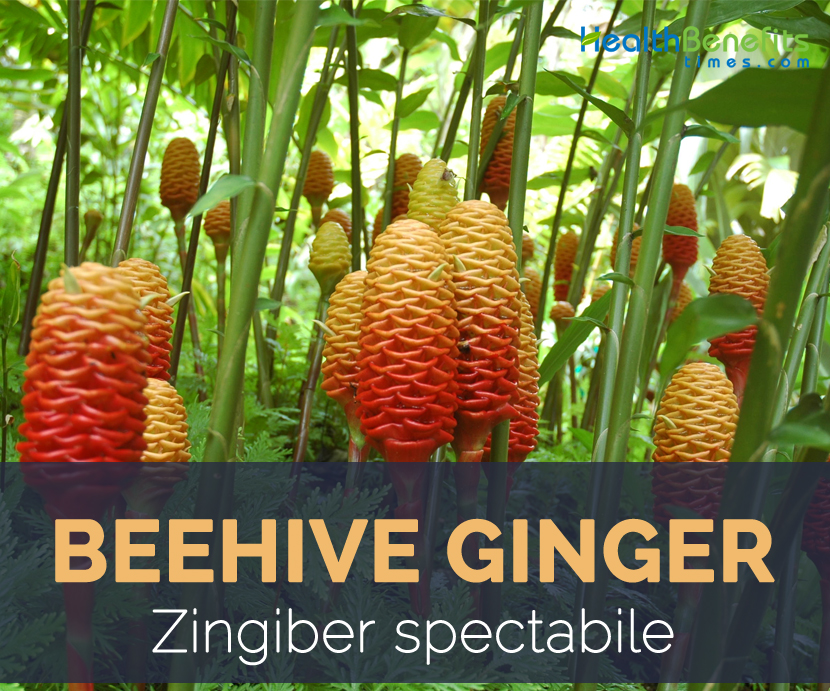| Beehive Ginger Quick Facts | |
|---|---|
| Name: | Beehive Ginger |
| Scientific Name: | Zingiber spectabile |
| Origin | Peninsular Malaysia and Peninsular Thailand. |
| Shapes | An ellipsoid capsule, 3 cm by 1 cm long and sparsely pilose. |
| More facts about Beehive Ginger | |
Plant
Beehive Ginger is a clumping herbaceous plant growing up to 4.5 meters (15 ft.), or even more. Beehive Gingers develop a strong rhizome from which new shoots emerge. The rhizome gets bigger annually. Plant grows well in warm and wet tropical rainforest, occurring along trails, streams and edges of forests up to 1000 m elevation. It thrives in full shade to partial shade. It prefers moist, humus-rich, well-drained fertile soil. Stems can be up to 3 meters tall. Leafy pseudo stems are 2–3.5 m high, and basal leafless stem is up to 1 m high. Leaf sheath is sparsely pilose with scarious margin, and ligule is deeply bi lobed and is broad and pale green in color. Leaf lamina is lanceolate and is 30–50 cm by 6–10 cm long and glabrous or slightly hairy at the base.
The plant’s inflorescence is cylindrical spike, beehive like, 10–30 cm by 6–7 cm long with rounded apex borne by a radical erect scape, which is 20–40 cm long. Bracts are obovate, turning red from yellow through orange, fleshy and curved outwards with edge incurved forming pouches; As the inflorescence ages and if it enjoys sunlight, the color changes to orange and then red. Bracteole is linear and 40 mm long; calyx is up to 35 mm long and cream to pinkish in color; corolla is 70 mm long and yellow in color; dorsal lobes are lager then lateral lobes; labellum is 40–60 mm long and dark purple with yellow spots; mid-lobe is shorter than lateral corolla lobes; apex is cleft; stylode is slender and free to base, not surrounding the style; stigma is not dilated, round, white in color and fringed with hairs; filament is absent; and anther is yellow, anther appendage is purple and 1.5 cm long. Flowering normally takes place from July through November.
Fruit
Fruit is an ellipsoid capsule, 3 cm by 1 cm long and sparsely pilose. Seeds are up to six in each loculus, are black when ripe, are ellipsoid, are 6 mm long and covered 2/3 from base by a white aril with fimbriate or lobed edge.
History
The plant is considered to have originated from Peninsular Malaysia and Peninsular Thailand. From there plant is grown worldwide because of their wonderful appearance and health promoting benefits.
How to Eat
- Leaves and rhizomes are occasionally used for flavoring.
- Leaves and rhizomes are used to flavor food.
- Its young rhizomes are sliced, soaked in vinegar and used as an appetizer.
- Young tender shoots are eaten as ulam, fresh as salad.
Comments
comments
